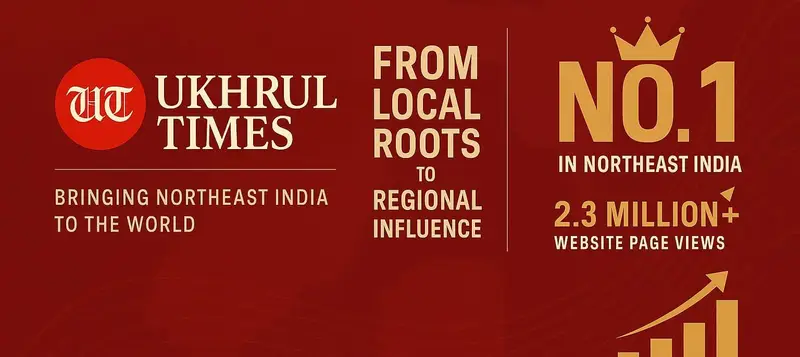Now Reading: Community support in Tangkhul Football is overrated, Prove me Wrong
-
01
Community support in Tangkhul Football is overrated, Prove me Wrong
Community support in Tangkhul Football is overrated, Prove me Wrong

On 28th January 1997, Bournemouth FC, a club from the coastal resort town in the south coast of England playing in League One (3rd Division of English Football) was minutes away from liquidation. For the people of Bournemouth; a small town with a population of fewer than 2 lakhs (183,491 as per 2011 census), football was life. The predominantly working class people of the town (95% of its workforce still employed in the service sector as of 2010) looked at football as more than just a game. Football gave these people something to look forward to with a smile for the weekend; something to lift their spirits and to have a few pints with their mates.
The thought of their club being taken away from them became unbearable. And in a desperate bid to save the club, the fans came together to arrange a bucket collection at the Winter Gardens in Bournemouth town centre. Players, fans, and the townsfolk contributed as the bucket collection raised a whopping 300,000 Euros (approx ₹.2.4 crores); just about enough to save the club dwindling into obscurity. The club came out of administration and also became Europe’s first-ever community club.
Bournemouth had more financial troubles over the years but is currently a well established side in the Premier League having played in the English top flight for 5 consecutive seasons. A true testament of what fans can do for their football clubs and what community support is all about.
The narrative may be different in Ukhrul and while comparisons made with a side from England can be unfair, there are certainly a few things that can be taken into context. We Tangkhuls boast of ourselves as passionate lovers of football and have also played the sport for more than 100 years. To show for this, we have an array of footballers who have written their names in the pages of not only Tangkhul football but of Indian football as well.
However, can the same thing be said of our community support and football culture at home? We always boast about the community being the stronghold of football but have little to show for it. It can be said that in the 100 years of us playing and loving this beautiful sport, we have built so little in terms of true community support and football culture.
But for now, let’s cover that up with the narrative that it becomes harder to build a real fan base and a football culture when there isn’t any professional club playing in a proper league. It’s true that most clubs in the district are seasonal clubs with local tournaments the only time these clubs exist before disappearing until another tournament pops up. Well, this was true until last year.
April 4, 2019; Yarkhok United FC, playing in the 23rd Winners Cup was only a win away from a historic qualification to the Manipur State League. A slender 1-0 lead away at KIYC in the first leg of the Semi Final had put them with one foot already in the Manipur State League. A silent crowd of about 1000 turned up for the match as Yarkhok sealed a narrow 3-2 win (4-2 on aggregate) to become the first team ever from Ukhrul to qualify for the State league in 100 years. The crowd gave a rousing applause at the full time whistle but just as the players joined arms to bow and thank the fans for their support; the crowd had already dispersed. Apart from the people in the technical area of Yarkhok United FC, few spectators had an inkling of what the win meant to Tangkhul football.
Before Yarkhok’s historic campaign in the Winners Cup, a few so called patrons and investors had promised to invest in the club if they qualified for the State League. Qualification sealed, Yarkhok had a small matter to settle, the final of the 23rd Winners Cup which they went on to win, also becoming the first team from Ukhrul to win it. The passionate backing from the patrons had given the small club impetus to be ambitious. Yarkhok assembled a strong team comprised of some of the best local talents along with a few non local signings for their debut season in the MSL. With a budget of approximately 30 lakhs for the season, the club started brilliantly in the State League winning their first two matches. But to call their impressive start to life in the MSL a surprise would be unfounded given that the players were some of the best in the State man to man.
The surprise came when only a few hundred fans showed up for the first two matches of the team. Surely, for a community that celebrated 100 years of football in such pompous grandeur, a 6 hour round trip once a week with a net spend of ₹400 to see their home club and most importantly, their local boys play live wasn’t a big ask; was it? Turns out, it was a big ask. The attendance of Yarkhok fans never crossed 500.
Breaking away from this discussion, let’s turn the clock back to April 30 2017. It was the final match day of the 2016-17 I League season and Aizawl FC were on course to finish their fairytale season with the I League title. Just one point was needed by the underdogs from Mizoram at the home of their North Eastern rivals Shillong Lajong to win the Indian top flight. More than 25,000 Aizawl fans had made the 375 km (12 hours-one way) journey to Shillong donned in their away white strip as history beckoned their team. A 1-1 draw that day against Lajong proved to be enough for Aizawl as they lifted the coveted I-league title. All this, just a year on after being relegated from the I League and then reinstated due to the withdrawal of Goan clubs Dempo and Salgoacar from the I League. JN Stadium reverberated with the songs and chants of the travelling Aizawl fans and Shillong was kept awake that night as the celebration went into the streets.
Editorial | Football: The most important of the unimportant things in life!
Coming back home, let’s cover the debacle of low fan attendances in Yarkhok matches by taking into consideration that travelling to Imphal (since all the MSL matches were played in Imphal this year) to see Yarkhok play was a big financial ask for many of the fans. But surely, to pay ₹30 rupees for a ticket to a football match sounds reasonable anywhere. Right? Why then was the huge outcry when the organisers of the Araang League announced ticket systems for the Semi-Finals and the Final of the last edition of the Araang League? The sold out home crowds in the Semi-Finals and the Final of the Araang League constituted of thousands of spectators who’d gotten in without any tickets.
Where then, is the community support that we so much love to associate with when we talk about football?
Smaller clubs from the valley (in Manipur) survive purely on community support. For a locality that has a club playing in the lower divisions, every household contributes either in cash or kind, for the club and the players. For the households that don’t contribute monetarily, some would give a bar of soap, some a handful of rice, some a packet of biscuit, and some a single log of firewood, the list goes on. Forget Bournemouth fans contributing their hard-earned money in buckets to save their club. Our closest neighbours have been showing the way for years and it’s hard to say we’ve learned anything at all.
With the MSL season brought to a halt due to the pandemic, Yarkhok remains in limbo with more than three-quarters of the investors failing to meet their promises even when the club has been delivering results on the field. The club that has had a big hand in shaping many youngsters and one that flew the first Tangkhul colours in State League football now sits knee-deep in financial crisis, unable to pay out their players.
And what do the genuine lovers of football who are investing their money and time get for their efforts to uplift Tangkhul football? A barrage of criticism and complaints about how the level of football in our place is lacking far behind compared to other states and tribes.
And still, with one breathe muttering criticisms; with the other, we continue to sing chants in our living room watching European football while our players have to be content with the occasional “Ohhhhhhh” and “Ahhhhhh” and “Yaayyyyyy” when they play in front of their own people. And while we indirectly pay thousands every year to watch teams that will never ever have anything to do with in our lives, clubs that are shaping the football culture and providing employment to many youths in our own place rot.
For once then, let’s make all the comparisons there is to make and ask ourselves; Do we, as a community have a profound love for the game and understand what community support really means? Or do we just have a shallow understanding of what loving football and supporting a football team means?
The author is a storyteller and writer from Ukhrul. He may be reached at sworngachan@gmail.com
















John Tungshang
Well written. Suggest the means and channel to contribute even 10 Rupees by the football lovers. I believe, Yarkhok Fc will be enough support.